THE UPPERVILLE COLT AND HORSE SHOW IS BACK!
In the shade of the majestic oaks near the village of Upperville, Virginia, the 168th anniversary of the oldest horse show in America will begin on Monday, June 7th and run through Sunday, June 13th, 2021. During this week, the nation’s top-ranked hunters and jumpers will compete alongside local ponies, sidesaddle ladies, and fast-running Jack Russell Terriers.
GENERAL ADMISSION SPECTATORS ARE WELCOME AT UCHS 2021
FOR DETAILS, PLEASE SEE UCHS 2021 GENERAL ADMISSION SPECTATOR PROTOCOLS.
Here’s how one of the most prestigious horse shows in America came to be…
The day was warm, mid-June 1853, and the turnpike that passed just beyond the oak grove was dusty. They came in buggies, carriages, and farm wagons. Others came riding astride and more than a few of them led their favorite young workhorse. They came from all over Fauquier and Loudoun counties in large numbers. Under the shade of the old oak trees, the ladies spread their blankets and set up makeshift tables, preparing picnics. The children ran through the trees playing and were admonished to stay away from the young horses so that neither would be hurt.
There was much excitement among the men as well as they separated the contestants into the two classes offered: one for colts and the other for fillies. They had come from all corners of Loudoun and Fauquier counties, and there were a lot of them.
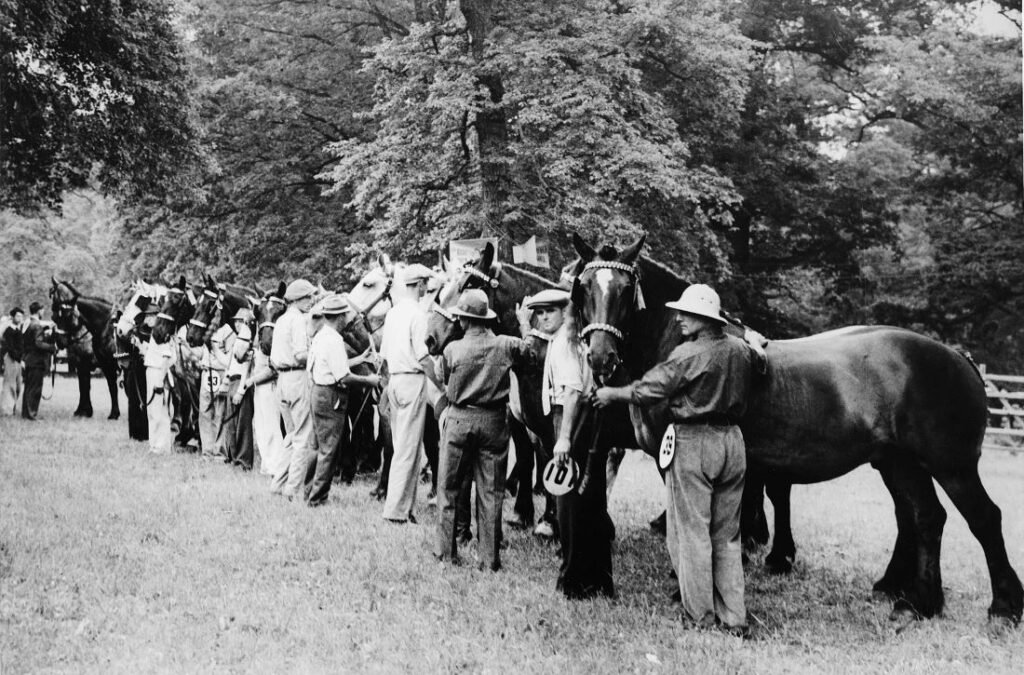
The judge for this event was Richard Henry Dulany, an avid horseman and farmer, and the driving force behind this—the first exclusive horse show in America. It was something he had long thought was needed to give farmers more of a reason to care for their stock during Virginia’s winters, but near tragedy was what moved the process forward.
On a cold winter’s ride, Dulany was interrupted to save a young horse tangled in a fence and nearly frozen to death. He was a staunch and devoted horseman who rode nearly every day of his life. He had lived for a time in England and greatly admired the farmers and their horses. After returning to his home at Welbourne, he started a pack of foxhounds in 1840 that would someday become the Piedmont Fox Hounds. He found that the draft crosses available were too heavy to stay with hounds in the open country around Upperville. The thoroughbreds of the day were too light and fine-boned to carry a man on a day’s hunting when a day’s hunting meant just that—sunup to sundown. He needed to do something that would entice the farmers near his home to take better care of their young stock and to produce a better quality animal.
Mr. Dulany, on a trip to New York, where the family had business holdings, met and impressed Charles Lewis Tiffany. In 1853, Mr. Tiffany had assumed control of Tiffany and Young, a stationery and fancy goods emporium, which he later renamed Tiffany & Company. He liked Dulany’s idea so much that he agreed to donate, design, and craft the first trophies and only charging for the silver used. Perhaps he sensed a new market for his burgeoning new silver trade.
As years passed, a club was formed to continue the event. Mr. Dulany was elected president and his neighbor, Welby Carter, was appointed secretary. The “Upperville Union Club for the Improvement of Horses” was to have many name changes in the future, but the location of the show would remain the same: the oak grove on “Number Six,” later to become Grafton Farm.
Bolstered by the success, Dulany and a friend, Robert Carter, toured the New England fairs and shipped a Morgan stallion of the Black Hawk line to Upperville. In the fall of 1856, they imported a four-year-old Cleveland Bay stallion, Scrivington, from England. Both stallions stood at stud free of charge to area farmers. There was no better way to foster good relations with landowners than to breed their favorite mare for free, and in some instances, buy the offspring, giving the farmer an added income. The two stallions were award winners at both the Maryland and Virginia State Fairs, and their offspring were winners at the 1859 Upperville Horse Show and the ensuing years.
The records of the earliest shows were likely lost in a fire that destroyed the original house at Grafton, but the Southern Planter Magazine reported in its August 1857 edition that the show had grown to three divisions: Riding Stock, Quick Draft carriage horses, and the Heavy Draft fieldwork horses. The article lauds the formation of the club and stresses the importance of improving the riding horse; it also pushed for the show to be held before the pastures became lush, “Any man can get a colt into pretty fair order on bluegrass and clover, but it takes some little skill and care to bring him into the ring in good condition by the first of June.” There was personal interest in the editor’s suggestion as he was usually cutting wheat in the middle of June when the show was held and could not attend. It seems no one wanted to miss the Upperville Show.
The show flourished until the coming of the Civil War. The oak grove at “Number Six” became a good spot to ambush travelers along the Winchester Turnpike instead of a quiet place to look at young horses. An excerpt of a letter from Mittie Herbert, a Dulany cousin, to another cousin, Julia Whiting, explains why there was no gathering of horses under the oaks. After the northern troops captured the area around Upperville she writes: ”Your Grandpa’s carriage horses, grey mare, John DeButts’ grey Celeste, mule and cart have all gone from here—at Oakley, no horse is left for them to go anywhere.” Oakley is next door to the Horse Show grounds.
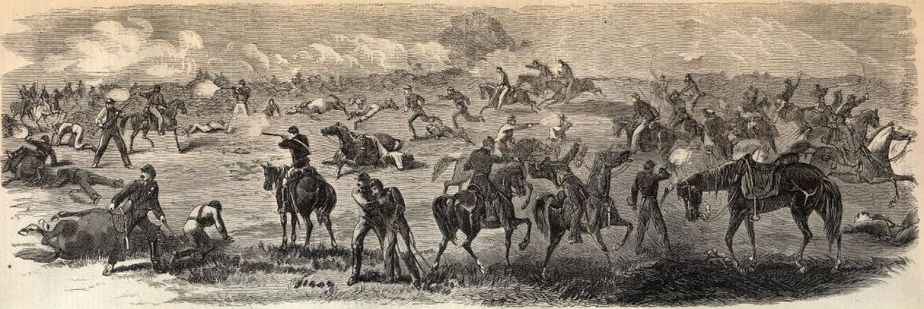
Scrivington, the imported Cleveland Bay, was sent north with his slave groom, Garner Peters. The two spent the war in Pennsylvania making their way by breeding Scrivington to the Yankee farmers’ mares. Both would return to Welbourne after the war to live out their days. Scrivington became a successful sire of driving as well as riding horses.
Dulany formed a troop of local young men, outfitting and supplying them with horses at his own expense. Although he did not believe in secession, he decided to defend his home from the northern invaders. His troop became part of the Virginia Seventh Calvary and he served throughout the war, suffering several wounds. His arm was crippled at the Battle of Tom’s Brook, but he continued to serve until the war ended, retiring at the rank of Colonel. Black Hawk, the Morgan, went to war with Dulany as officers of the Confederacy had to furnish their own mounts. In a letter home, he requested that his father find him a Calvary horse saying, “I dislike the thought of even a chance of losing Black Hawk when I may get another at one-fourth his value that will answer every purpose.” Unfortunately, although the horse was not wounded in war, he foundered and was lost before Dulany could send him to a safe haven.
Because of extensive business holdings in the north, Colonel Dulany was soon to get Welbourne back on its feet. The horse show began again as soon as it was feasible, and in 1869 the club reorganized, dropping Union from its name (for obvious reasons). In 1872, the club added an auction at the end of the show, charging a $5 commission on horses sold. In 1894, the club adopted a new charter declaring that its object is “the thorough development of horses and colts, the formation of the pursuit of raising high-grade horses and establishing a better market for the same. Annual shows and Exhibitions testing the speed, gaits, and jumping powers of the various breeds or classes of horses.” Colonel Dulany was reelected president, a post he would hold until just before his death.
Under Dulany’s direction, the Upperville Colt Club began a trend that would carry it throughout the years. As the role of the horse in the community changed so did the type of classes offered. The original two classes, “heavy draft” and “colts and fillies,” had grown into a weeklong, over two-hundred class, international event. The early shows concentrated on the working horse, the heavy draft, the quick draft, high steppers in harness, and four in hand. There were also classes for park horses and gaited horses.
Dulany was a foxhunter who loved, second only to his family, nothing more than following hounds “cross country and jumping whatever barred his way.” In a letter home during the war, he had complained that the horses they sent him wouldn’t jump anything over three feet while he was being chased by the Yankees near Berryville. This close escape may have been the inspiration behind the addition of the Hunter Improvement classes at the rejuvenated show after the war.
In 1896, classes were offered for “hunters carrying 130 lbs., 150 lbs., and 180 lbs.; horses to be judged on conformation 40% and 60% general promise, owners to furnish their own weights.” There was also a division open to all at a minimum weight of 140 lbs. and all would jump fences 4 1/2 to 5 feet. By the early 1900s, hunter classes were divided into “Green Hunters, Four-Year-Olds, Lightweight, Heavyweight, and open to all” with jumps 4 1/2 to 5 feet.
For a number of years beginning in the 1890s, the horse show closed with a steeplechase “in the field around the grounds.” In 1897, the race was “open to gentlemen riders and horses that had participated in the show and have never previously won a race. Horses to carry the same weights as they did in Hunter Classes.” In 1908, the distance for the steeplechase had increased to 2 1/2 miles and was sanctioned by the National Steeplechase and Hunt Association.
Classes in 1901 included four-horse teams of heavy draft that were required to draw a load of 3 tons. Also, a class was added “for horses that have been regularly hunted with the Piedmont Fox Hounds. The members of said club to subscribe for a cup, the horse show to add $20 dollars, entrance fee $5, 8 entries or no show.”
A rapid expansion of the horse show facilities began according to the existing minute books. In May 1895, J.W. Carpenter was awarded a contract to move the grandstand and build a judges stand on a bid of $35. He must have worked quickly because the club held its first meeting in the new grandstand on June 15, 1895. The grandstand was lengthened to 32 feet in 1896. By 1901, the back of the grandstand had been enclosed and permanent stalls were built on the opposite side of the grounds.
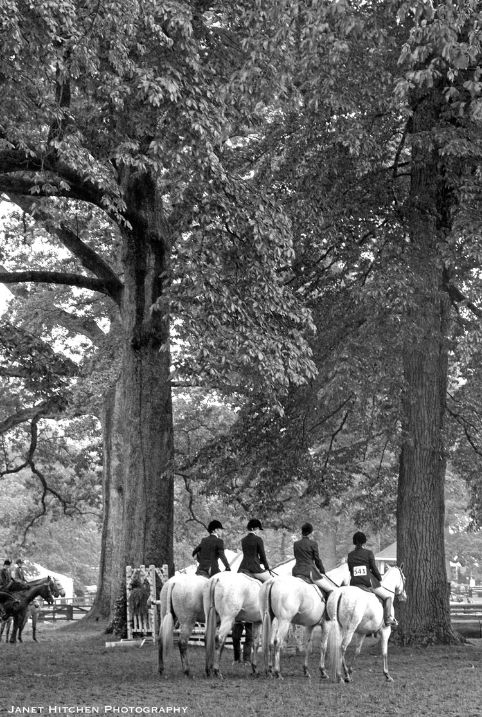
Photo Credit the late Janet Hitchen Photography
Foxhunting and the development of the thoroughbred breeding farms in the area grew hand in hand. Thoroughbred breeding classes were added in 1902 and were strongly supported through the years by the local and nationally famous racing stables Rokeby, Brookmeade, Llangollen, Blue Ridge, and Newstead, to name just a few who regularly sent young stock to make their public debut beneath the oaks. Brookmeade and Llangollen oftentimes lead their yearlings down the Winchester Turnpike (what is now John Mosby Highway, Rt. 50), making the first steps on a journey that would lead some to sales rings in Saratoga, others to racetracks, and still others to hunt fields and show rings across the country.
In 1905, Dulany stepped aside and Willie Fletcher, vice president since the adoption of the charter, became president. Dulany remained on the board and was still active. The great sportsman of the day, Harry Worcester Smith, noted that when he judged the 1905 show, “the dear old Colonel (Dulany) was here, there, and everywhere,” welcoming family and friends to another gathering beneath the oaks. Mr. Smith also noted that he was happy that the “Turnpike” had been cemented to keep down the dust. Without a doubt, the Colonel (Dulany) was the driving force behind the horse show, but he always sought and got willing help from his neighbors and friends.” The membership included many of the men he fought alongside in the war, including one Colonel John Mosby from Warrenton (joined in 1872) for which the road between the oaks is now named.
The Colonel died after a morning ride in October 1906. In 1910, the Upperville Colt Club began a class to honor the memory of the Colonel—The Founder’s Cup—for horses born and bred in Fauquier and Loudoun, to jump 4 feet, judged on conformation 50% and performance 50%. The class is still held today but has been opened to horses bred in Virginia. To recognize the 150th anniversary of the show, Dulany’s descendants donated a silver trophy created by Tiffany & Co. to become a perpetual trophy in his memory.
In 1911, a class for Chargers was introduced and held until after the First World War. The introduction to the class read: “In order to stimulate the raising of horses for the army as well as to acquaint horse breeders with the type and kind best suited for army purposes, The Cavalry Association of the U.S. Army donates a handsome silver cup to the horse considered the best type of charger suitable to become an officer’s mount.” The class was open to “stallion, mare or gelding shown to halter on conformation only; breeding, at least 50% thoroughbred; age, three or four; color, any but grey or white; height, 15.2hh to 16.2hh.” Later, when the Cavalry Remount Station was opened in Front Royal, Virginia, classes were offered for horses by stallions standing at the Remount. The Horse Show was held during both wars with the proceeds during World War II going to the War Relief Fund.
As Upperville became more of a rural farming community, there was a definite shift away from the flashy high steppers, hackney, and gaited horse classes that may have suited a more urban area. As foxhunting became more and more popular, the utility horse that could pull the wagon to the mill to have the grain ground and the next day go foxhunting was the one more in demand. Today, there are more than a dozen fox hunting packs within an hour of Upperville, and while the show is given credit by some for establishing this area as an important horse country, foxhunting was an important influence on the development of the show. Beginning with Dulany, who was master of the pack that later became the Piedmont Fox Hounds, five Masters and three Presidents of the Hunt were among the twenty presidents of the horse show. Cricket Bedford, daughter of Erskine Bedford who was a Master of the Hunt and president of the show, said “Daddy wasn’t a horse show person; he thought it (being president) was like being in the PTA, and you were just supposed to do it.”
By the 1920s, hunters and jumpers dominated the show; the breeding divisions were still held, but more classes were invented for hunters. In 1928, there was a class for Handicap Hunters. “Performance only to count. Three-year-olds to jump 3 1/2 feet, horses that have never won a blue ribbon at 4 feet or over prior to the close of this show to jump 4 feet, blue-ribbon winners at 4 1/2 feet, and horses that have won a championship or competed in a high jumping contest to jump 5 feet.”
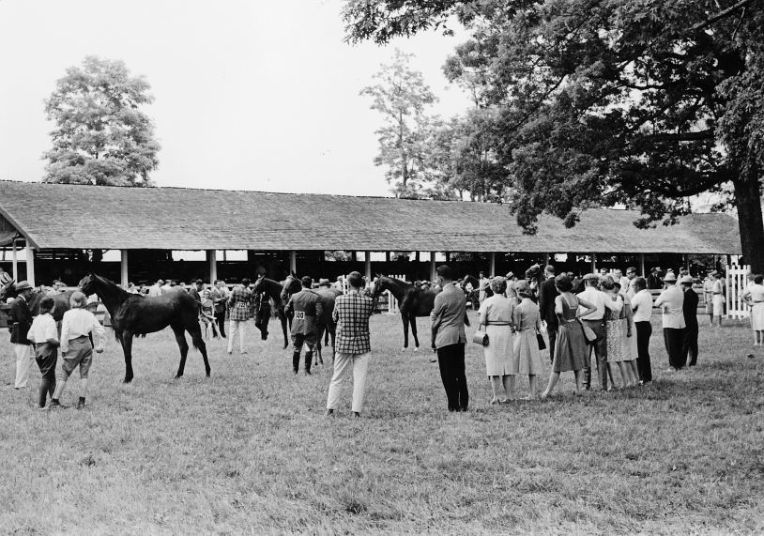
Courtesy of the Upperville Colt and Horse Show Archives
Upperville was to become an important social and sporting event. In the 1930s, The Fauquier Democrat reported crowds as large as ten-thousand. Dignitaries and diplomats from Washington and abroad traveled to Grafton to see the finest horses Fauquier and Loudoun counties had to offer.
High jumps were regularly held, beginning in the late 1890s. In 1896, the class was “open to all horses, over one jump 3 trials for each horse, jumping only to count. Beginning at 4 1/2 feet, but will not be raised to a greater height than 5 1/2 feet.” It was discontinued for a time but brought back in 1958. In its first year back, Kathy Kusner, who would go on to Olympic fame, and a little flea-bitten gray mare owned by Thomas E. Jones’s New Hope Farm, set a lady’s high jump record of 7 feet 3 inches.
The hunters held sway in the main ring for years, giving way to jumper—grudgingly—on occasion. In 1982, the jumpers took up residence across Rt. 50 from the original show grounds on Salem Farm, owned by Mrs. A.C. Randolph.
Upperville was a charter member of the American Grand Prix Association when it was formed in 1972 to promote Olympic-style jumping. The Upperville Jumper Classic has been the finale of the show every year since. It is an important stop for many Olympians past, present, and future. George Morris, an Olympian himself and now a top trainer, said after seeing the Grand Prix after a long absence, “You have brought Europe to Upperville, VA.”
The longevity of the horse show is an amazing fact, but to be held in the same location all these years may be even more amazing. Of course in the early years, the grounds were owned by Colonel Dulany and his heirs. During that time, a three-quarter-bred gray mare, Kathleen, foaled a gray colt under the oaks at the old horse show grounds. Silver Crest would become one of the top show horses of the 1920s. After hunting and showing until the age of eleven in Virginia, he began his national horse show career. His record at 46 shows, according to the Official Horse Show Blue Book, was 14 championships, 14 reserves, 171 firsts, 92 seconds, $6769.45 in prize money, and $1350 worth of plate. In 1922, he jumped 100 consecutive jumps without a fault and won every class he was entered in. When he retired from the ring, Silver Crest returned to Grafton where he lived out his days grazing beneath the oaks where he was born. He was buried there on the outside course, what is now Ring Two on the hunter side.
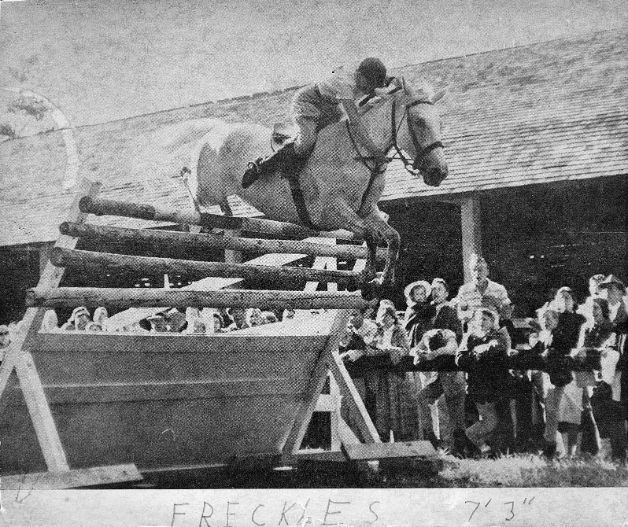
Courtesy of the Upperville Colt and Horse Show Archives
Later Dr. and Mrs. A.C. Randolph owned the property. Both would be Masters of the Piedmont Fox Hounds and horse show presidents. She joined the board in 1961 and was the first lady to be elected president, serving for nearly twenty years. A horsewoman of some note, she supported nearly every phase of equine competition. She was an avid foxhunter, raced both on the flat and over fences, and produced a champion steeplechaser. She bred and campaigned many champion show horses: Black Atom, Quiet Flight, Nereus, Southside, and High Noon—the horse that Kathy Kusner took to her first Olympic team trials—to name but a few.
In 1995, the board awarded her a lifetime achievement award for her service to the show. She passed away the morning after the 1996 show while serving as vice president. She was a guiding light behind the scenes before and after her tenure as president, and her influence is still felt in the conduct and character of the show.
Today, the Robert Smith Family owns the original grounds, strong supporters of the horse show and under whose watch the old grounds have taken on major renovations. The jumper side is now owned by Shelby Bonnie, the grandson of Mrs. A.C. Randolph (himself a Master of the Piedmont Fox Hounds). Now a 501(c)3 organization, the Upperville Colt and Horse Show, Inc. is still very much a community affair.
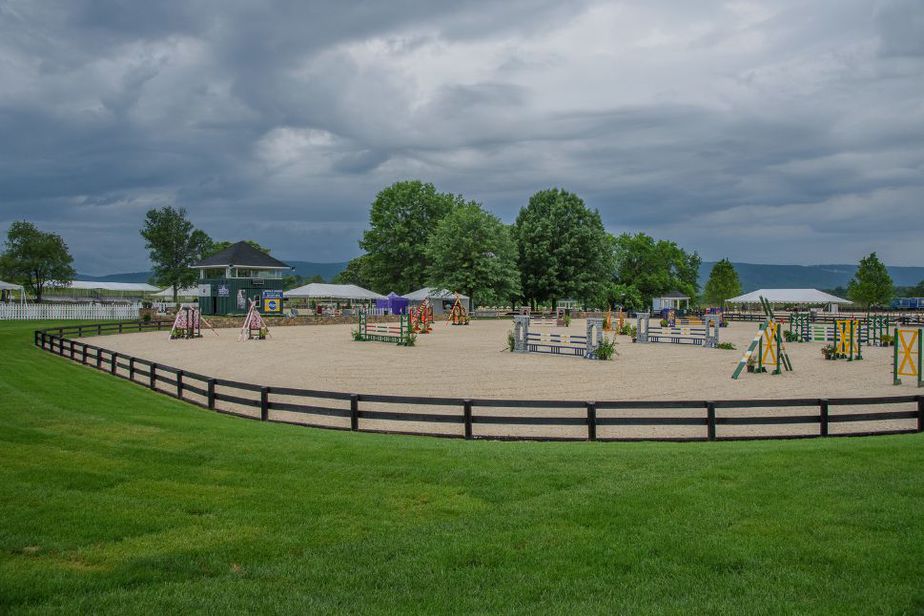
Courtesy of the Upperville Colt and Horse Show
Sources: The National Sporting Library; The Dulany’s of Welbourne; A Family in Mosby’s Confederacy by Margaret Anne Vogtsberger; Fauquier Loudoun Magazine, C. J. FitzGerald; A manuscript by Harry Worcester Smith; Kitty Smith’s History of the Upperville Colt and Horse Show: the Fauquier Democrat
Edited and reprinted with permission from the 2019 Upperville Colt and Horse Show Official Program. Learn more at https://upperville.com/history.
GENERAL ADMISSION SPECTATORS WELCOME AT UCHS 2021!
FOR DETAILS, PLEASE SEE OUR 2021 GENERAL ADMISSION SPECTATOR PROTOCOLS. GENERAL ADMISSION AND PARKING ARE FREE!
As an equestrian media outlet focused entirely on American horse sport, EQuine AMerica showcases the USA’s equestrian talent (both two-legged and four) in the disciplines of para dressage, dressage, hunters, jumpers, and eventing. We support and promote our nation’s fantastic equine events, products, services, artists, authors, science/tech, philanthropy, and nonprofits through our online magazine and social media platforms. Our mission is to offer you interesting/inspiring short and long-form content in a format that’s beautiful, readable, and relatable.



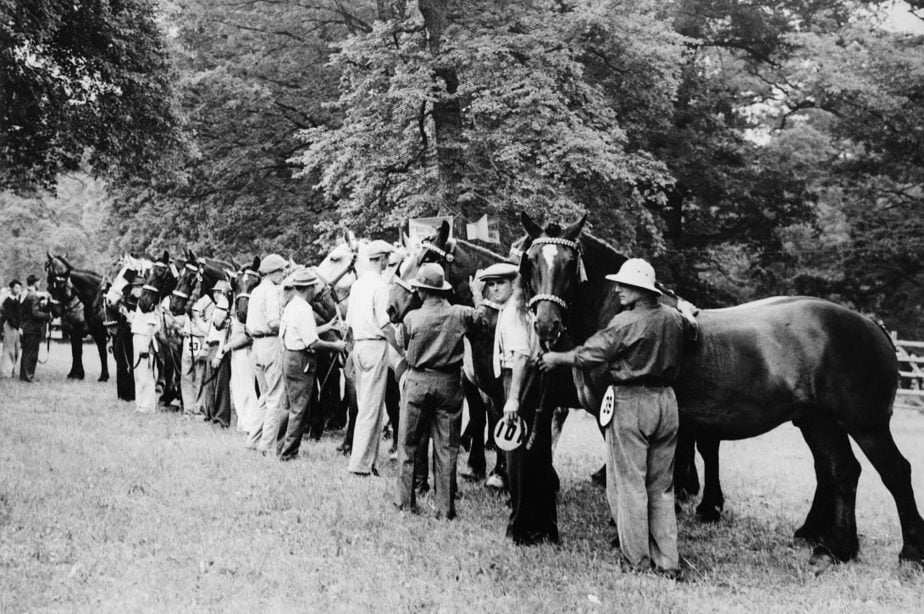

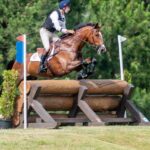

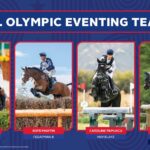
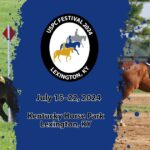
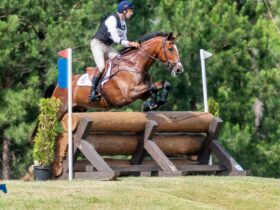

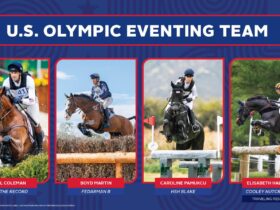
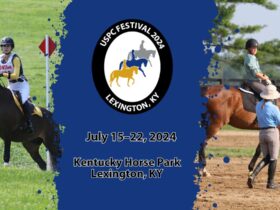

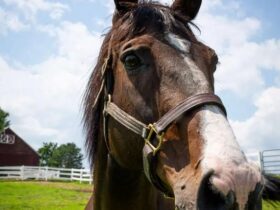
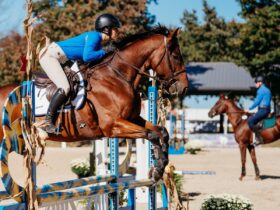


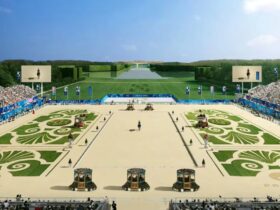
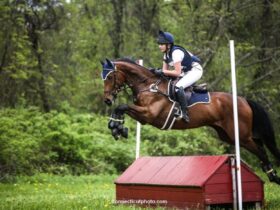


SOCIAL